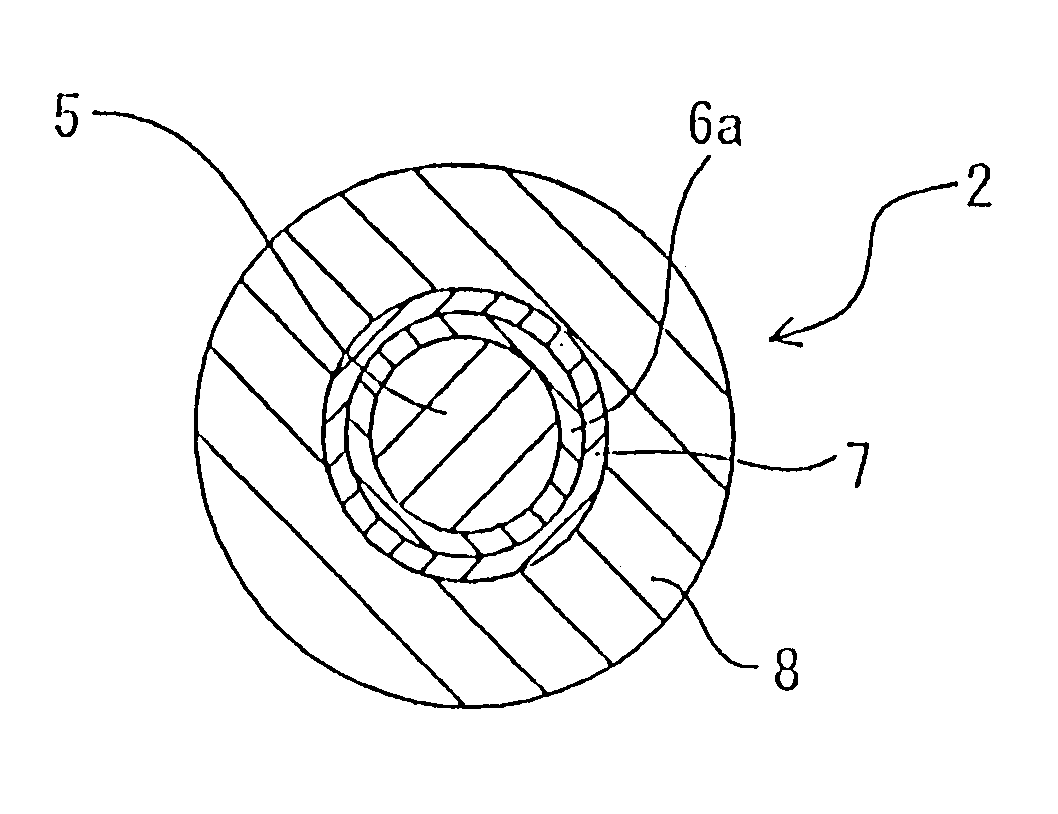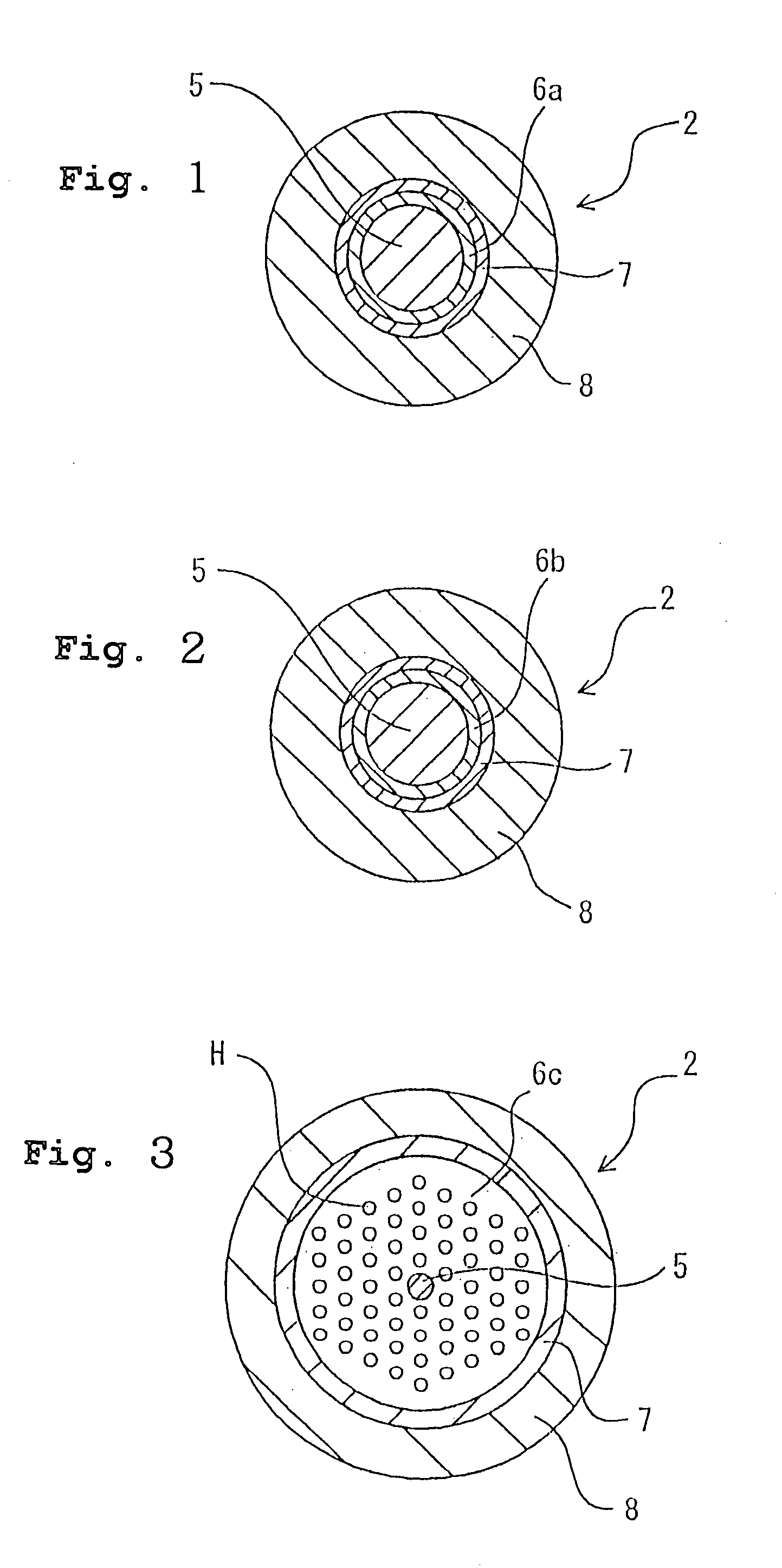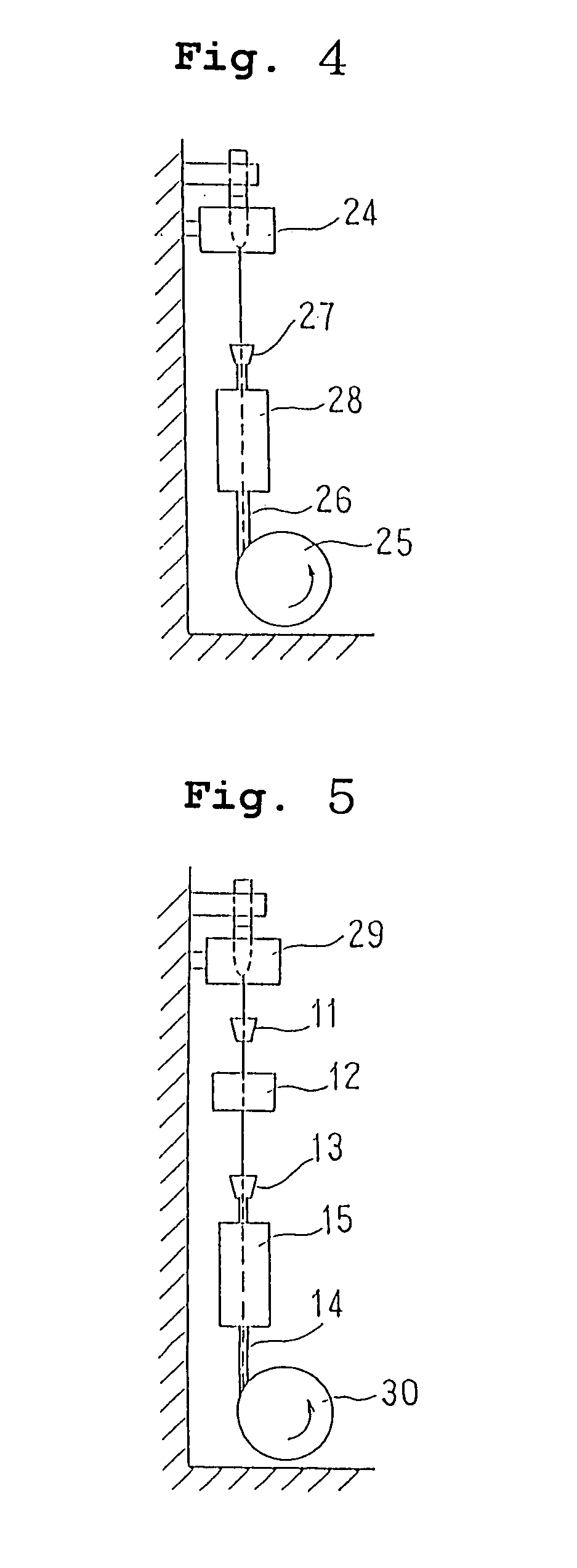Optical fiber for transmitting ultraviolet ray, optical fiber probe, and method of manufacturing the optical fiber probe
a technology of optical fiber and ultraviolet ray, which is applied in the direction of manufacturing tools, glass optical fibre, instruments, etc., can solve the problems of unavoidable deterioration of conventional optical fiber, large size of the excimer laser, and large size of the exposure device equipped with the excimer laser, etc., and achieve the effect of etching more efficiently
- Summary
- Abstract
- Description
- Claims
- Application Information
AI Technical Summary
Benefits of technology
Problems solved by technology
Method used
Image
Examples
example 1
[0071]A fluorine-doped silica glass (a trade name: AOX made by Asahi Glass Company) containing fluorine at 100 to 200 ppm and OH group at 4 to 7 ppm was used for the core, and silica glass containing fluorine at 2,000 ppm was used for the clad. The core and clad were produced to have a diameter of 600 and 750 μm, respectively. The optical fiber was treated with hydrogen, and irradiated with ultraviolet ray of varying wavelength emitted from an ArF excimer, to measure its transmittance at each wavelength before and after it was irradiated with ultraviolet ray running the unit length (1 m) of the fiber.
[0072]FIG. 7 shows the measurement results. As shown, the transmittance of the optical fiber remained essentially the same before and after it was irradiated with ultraviolet ray, T1 versus T2, indicating that the optical fiber for transmitting ultraviolet ray showed little deterioration even when it was irradiated with ultraviolet ray.
[0073]The optical fiber not treated with hydrogen w...
example 2
[0084]In the Example, a fluorine-doped silica glass (a trade name: AOX made by Asahi Glass Company) containing fluorine at 100 to 200 ppm and OH group at 4 to 7 ppm was used for the core 5, and silica glass containing fluorine at 2,000 ppm was used for the clad 6a formed over the core 5. The core and clad were produced to have a diameter of 10 and 125 μm, respectively. In COMPARATIVE EXAMPLE, the optical fiber composed of the 10 μm-diameter core of silica glass and 125 μm-diameter clad of silica glass was prepared. The end of each of these optical fibers was cut in the direction perpendicular to the optical axis, and the covered layer for protection 8 and protective layer 7 of given length (around 1 cm) from the cut section end were separated, to clean the external surfaces of the clad 6a. Next, the end section of each of these fibers of the EXAMPLE and COMPARATIVE EXAMPLE was immersed in a 30% aqueous solution of hydrofluoric acid 10, held in the container 9, to etch the section. T...
PUM
| Property | Measurement | Unit |
|---|---|---|
| wavelength | aaaaa | aaaaa |
| diameter | aaaaa | aaaaa |
| diameter | aaaaa | aaaaa |
Abstract
Description
Claims
Application Information
 Login to View More
Login to View More - R&D
- Intellectual Property
- Life Sciences
- Materials
- Tech Scout
- Unparalleled Data Quality
- Higher Quality Content
- 60% Fewer Hallucinations
Browse by: Latest US Patents, China's latest patents, Technical Efficacy Thesaurus, Application Domain, Technology Topic, Popular Technical Reports.
© 2025 PatSnap. All rights reserved.Legal|Privacy policy|Modern Slavery Act Transparency Statement|Sitemap|About US| Contact US: help@patsnap.com



